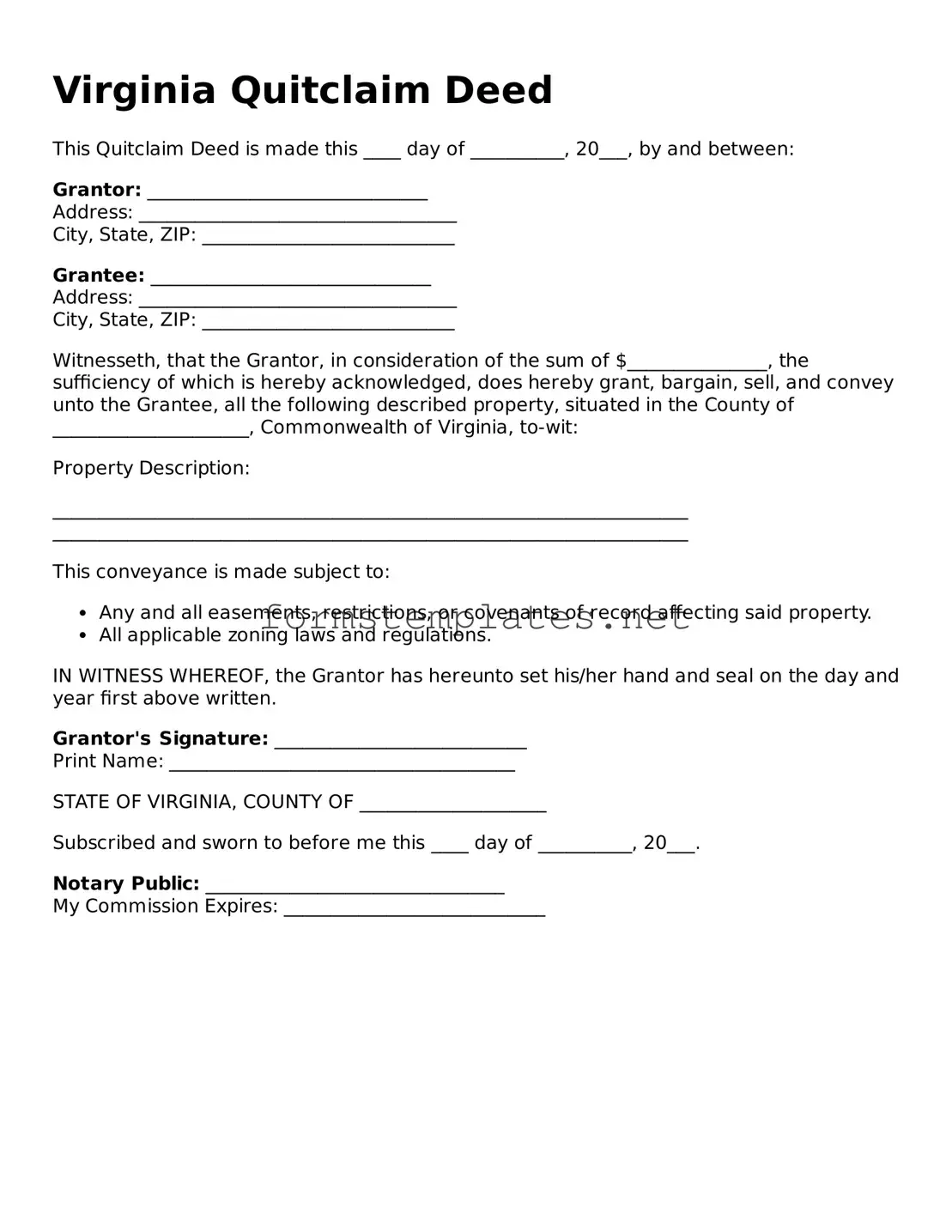Virginia Quitclaim Deed
This Quitclaim Deed is made this ____ day of __________, 20___, by and between:
Grantor: ______________________________
Address: __________________________________
City, State, ZIP: ___________________________
Grantee: ______________________________
Address: __________________________________
City, State, ZIP: ___________________________
Witnesseth, that the Grantor, in consideration of the sum of $_______________, the sufficiency of which is hereby acknowledged, does hereby grant, bargain, sell, and convey unto the Grantee, all the following described property, situated in the County of _____________________, Commonwealth of Virginia, to-wit:
Property Description:
____________________________________________________________________
____________________________________________________________________
This conveyance is made subject to:
- Any and all easements, restrictions, or covenants of record affecting said property.
- All applicable zoning laws and regulations.
IN WITNESS WHEREOF, the Grantor has hereunto set his/her hand and seal on the day and year first above written.
Grantor's Signature: ___________________________
Print Name: _____________________________________
STATE OF VIRGINIA, COUNTY OF ____________________
Subscribed and sworn to before me this ____ day of __________, 20___.
Notary Public: ________________________________
My Commission Expires: ____________________________
